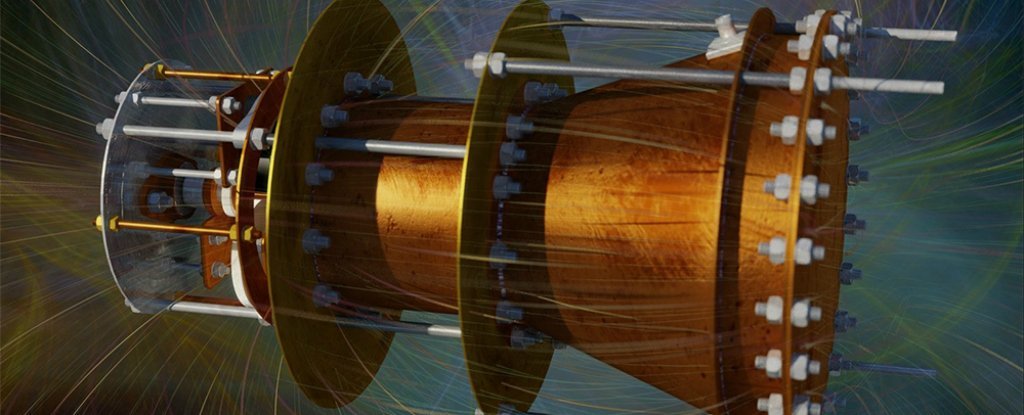One of the most difficult aspects of space
travel happens not in the later stages, but in the very beginning – on Earth’s
surface. In recent years, scientists have struggled to come up with more
efficient ways of propulsion, as those which are available and widely used
today, have failed more frequently that they would want them to.
A New Dawn?
In the beginning of the 21st
century, a British scientist named Roger Shawyer made an extraordinary
discovery – he managed to create a completely new type of engine, which he
thought would revolutionize the industry. This invention, technically known as
“radio frequency resonant cavity thruster”, is widely recognized under a
simpler name – the electromagnetic drive, or just EmDrive.
 |
| The EmDrive |
Breaking the Laws
of Physics
The invention of a new type of engine is a
worthy achievement in itself. However, the most intriguing part of it is that
in theory, it should not work. At first, Shawyer’s research was met with
negative reception. Other scientists claimed he did not understand physics and
applied wrong methods, which should, obviously, cause the invention to fail. It
is difficult to blame them for their reaction. EmDrive, in theory, provides
thrust without actually consuming fuel in the process, which breaks the
established laws of physics.
Persistence Pays
Off
Despite being ridiculed, Shawyer has not
abandoned his research. The initial reaction of the scientific world made it
difficult for him to continue, however, he has kept his focus. Nine years after
the discovery, a group of Chinese engineers successfully built the engine and
confirmed that it actually works. However, many people still regarded the
experiment as a fluke. In 2016, on the 17th on November, NASA
released their own documentation concerning the EmDrive, once again proving
Shawyer’s theory right.
 |
| Shawyer with the prototype |
Theory Turned
Practicality
In
2016 Guido Fetta, the founder of the Cannae company, launched a
miniature, EmDrive powered satellite into space. Other private
industries want to do the same. Shawyer claims that newer, improved
versions of his engine will be able to lift much heavier spacecraft.
Maybe, in the future, huge space rockets propelled by enormous tanks
filled with petrol will become history, as they will have been
replaced by the EmDrive?
 |
| A conventional space shuttle |
Conclusion
Technological
advancements seem to be improving not only our everyday lives, but
also set new limits for humanity. Perhaps this invention is the
beginning of a new era of space travel.
What do you think about the EmDrive?
What other benefits might it bring?
Would it be possible for the EmDrive to be widely used in everyday transportation?
What do you think about the EmDrive?
What other benefits might it bring?
Would it be possible for the EmDrive to be widely used in everyday transportation?
References:
http://tylkonauka.pl/wiadomosc/amerykanski-inzynier-przetestuje-naped-em-drive-w-kosmosie
http://physicsfromtheedge.blogspot.co.uk/2015/06/crit-of-shawyers-emdrive-theory.html

Comments
It would be the first kind of propulsion to achive such feature. Cars get their momentum from pushing the earth under their wheels. All kinds of flying and space crafts push some kind of gas or particles behind them to get momentum.
Such drive would violate some of the most comonly accepted laws of physics like the rule of momentum conservation and 3rd law of newton dynamics. It's highly unlikekly that it could work and if it would, we would have to change our understading of physics a lot.
Scientists struggle to deliver even extremly slight thrust using this method. So far no experiments resulted in measurable force produced only by the described principle. However there are still some slight possibilities considered by physicists that it could potentially work.
I believe this discovery would have much wider positive effect on our life, not only in application to space shuttles.
Still, it will take many years of developing EmDrive to make it scalable to use it in bigger satellites or even spacecrafts. Nasa is thinking about using it to accelerate spaceships on their way to mars, because of the lack of any resistance in vacuum. But it will be only additional propulsion not the main drive of our man spaceships for many years to come.
I really respect and admire Roger Shawyer for not giving up despite all negative comments. I wonder how many other inventors stopped their work after such opinions.
EmDrive sounds really interesting and if it’s true I think that might be one of the hugest inventions of all times. If it could replace car or plane engines, the travel costs would rapidly drop, and also it would have a huge impact on global warming.
I really hope that EmDrive will work some day in every kind of vehicle.
To sum up, I keep my fingers crossed for EM Drive as it could definitely revolutionize space travel.
As far as EMDrive goes... I've never heard of it. I'm not too good with engines especially space ones, but because of your article I will read about EMDrive more. Thanks !
Thank you so much for the new information
On the other hand knowledge doesn't come from your sex, but from years or studying and hard work.